Experience the Future: The New All-Electric Ford Explorer Unveiled
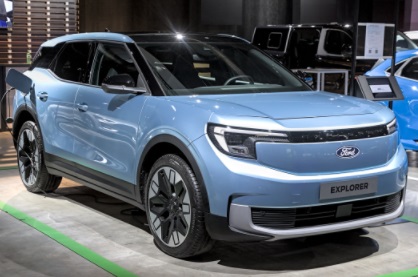
Revolutionary Features
The New All-Electric Ford Explorer WLTP Range is packed with cutting-edge technology and innovative features designed to enhance your driving experience:
Advanced Infotainment System
- 14.6” Touchscreen with SYNC Move: This impressive display offers seamless interaction and connectivity, including wireless Apple CarPlay and Android Auto integration. Stay connected, entertained, and informed with ease.
Superior Sound Experience
- 7-Speaker Sound System: Enjoy a rich, immersive auditory experience with the Explorer's high-quality sound system. The soundbar mounted on the dashboard enhances audio clarity, making every journey more enjoyable.
High-Level Standard Equipment
- Comfort and Convenience: The Explorer comes equipped with an array of high-level standard features designed to provide ultimate comfort and convenience. Every detail has been crafted with the driver in mind, from its ergonomic seating to its intuitive controls.
Comparing Costs: Are Electric Vehicles Catching Up to Petrol Cars?

Many experts predict that by 2026, Electric Vehicles (EVs) will cost the same upfront as petrol cars. Research has been done for seven new EVs and their petrol counterparts to see how the UK is doing in the first year of the Zero Emissions Vehicle (ZEV) mandate. There are three ways to get these cars: buying outright, leasing, and personal contract purchase (PCP), making up 20 different scenarios.
What We Found
- Smaller Cost Difference: EVs were only 12% more expensive upfront than petrol cars, not 50% as often claimed.
- Price Parity in Some Cases: In 6 out of 20 scenarios (30%), the cost of EVs matched or paid back within a year.
- Quick Payback: In another 5 scenarios (25%), the payback period was 2.5 years or less.
- Long-Term Savings: Drivers with average mileage could save up to £7,000 over four years by choosing an EV. Even with lower mileage, the minimum saving is £3,000 over four years, whether they lease or buy outright or through PCP. Higher mileage means more savings.
Recommendations to Keep Costs Down
- Continue the ZEV Mandate: This policy has been crucial in making EVs more affordable. It should continue.
- Better Communication: Clearly explain the cost savings of EVs and dispel myths so consumers can make informed decisions.
- Reduce Public Charging Tax: Cutting taxes on public charging will make it cheaper to run an EV.
- Support for Home Chargers: Investing in home chargers benefits both new and second-hand EV buyers and is more effective for low to middle-income earners than VAT cuts on new EVs.
Conclusion
The UK is making good progress towards making EVs as affordable as petrol cars. With continued support and clear communication of benefits, more people can switch to cleaner, cheaper EVs. Investing in home chargers is particularly beneficial, offering significant savings and convenience to a wide range of drivers.
By focusing on these areas, the UK can ensure that EVs become a cost-effective choice for more people, helping to drive the transition to zero-emission vehicles.
Source: https://www.bvrla.co.uk/resource/is-the-ev-versus-ice-price-gap-shrinking.htmlIntelligent Speed Assistance Becomes Mandatory in New European Cars
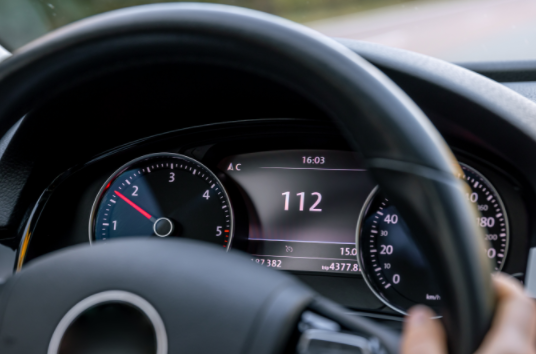
Intelligent Speed Assistance Becomes Mandatory in New European Cars
Starting next month, all new cars sold in Europe, including the UK, must have Intelligent Speed Assistance (ISA) technology. This rule was first applied to new models of cars in the EU on the 6th of July 2022, and is now extended to all new cars sold in the UK as of the 7th of July, 2024.
What is ISA?
ISA technology is designed to help drivers stay within speed limits. It does not apply to vehicles already registered and in use before July 2024.
How Does ISA Work?
ISA systems work alongside the driver, ensuring they can always take control and override the system if needed. Car manufacturers can choose from four methods to provide feedback to drivers:
- Cascaded Acoustic Warning:
- An initial visual warning is followed by a sound if the driver doesn't respond.
- Cascaded Vibrating Warning:
- Like the acoustic warning but uses vibrations instead.
- Haptic Feedback Through the Accelerator Pedal:
- The pedal gently pushes back against the driver’s foot to signal the need to slow down. The driver can override this by pressing harder.
- Speed Control Function:
- The car automatically slows down slightly, but the driver can override this by pressing the accelerator pedal further.
Implementation and Flexibility
Many car manufacturers have already started including ISA systems in their vehicles. Some have even gone beyond the basic requirements by limiting the top speed of certain models.
While ISA is mandatory, drivers can choose to turn it off for each journey if they prefer.
Conclusion
The new ISA technology aims to improve road safety by helping drivers adhere to speed limits. With the option to override the system and even turn it off, drivers retain control while benefiting from this advanced safety feature.
Source: https://www.bvrla.co.uk/resource/mandatory-measures-on-new-cars-from-july.htmlHybrid Vehicles: Exploring Types and Varieties
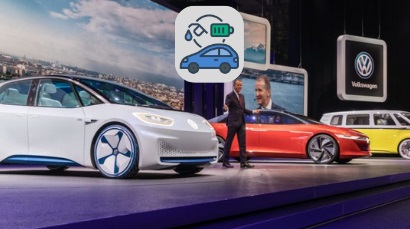
Hybrid Vehicles: Exploring Types and Varieties
There has been a rise in electric car buyers, but there are car drivers who are still sceptical about pursuing fully electric vehicles, so many opt for hybrid vehicles as a way to test out the electric car while still being able to use the fuel that they are familiar with.
But what are the different types of Hybrids, how do they work and which one will work best for you?
In today’s shifting market, more people are considering electric vehicles, but some still doubt this. This is where hybrid vehicles will come in, as they offer a blend of electric and traditional fuel power. This can ease the transition for drivers who are hesitant about Electric Vehicles. But what exactly are hybrids, how do they work, and which one is right for you? Let’s explore further.
Mild Hybrids
The latest innovation in hybrid technology is the ‘mild’ hybrid system. As the name suggests, this system was not designed to exclusively power the vehicle using electric power. Instead, it offers a slight boost to the gasoline engine, particularly when going from standing still to accelerating, this also aids in relieving the load on power-intensive components such as air conditioning. This would usually use 48-volt electric systems. Mild hybrids don’t require external charging as the batteries recharge through a combination of power from the gasoline engine and recycled energy from when the vehicle brakes.
Full Hybrids
Full hybrids also come equipped with both a gasoline engine and an electrical component. However, the electrical system in a full hybrid carries a heavier load compared to that of a mild hybrid. In fact, most full hybrids can travel solely on electric power for a considerable distance. This usually occurs at lower city speeds, which explains why you might notice a full hybrid's City MPG rating surpassing its Highway MPG rating, unlike conventional gasoline-powered vehicles where the opposite is often the case.
Electric Vehicles with Range Extender Hybrids
While strictly speaking, all-electric vehicles aren't hybrids, some are designed with a small petrol engine as a backup. When an electric vehicle runs out of charge, it needs to be recharged before it can be driven again. Range extender hybrids use their petrol engine to either charge the battery or power the electric motor, ensuring you're not left stuck. Depending on the size of the petrol engine, this backup power can provide anything from a few dozen miles to hundreds of miles.
Plug-In Hybrids (PHEVs)
So far, all the hybrid cars we've looked at charge their batteries using only their own systems. But plug-in hybrids are different. They can charge up their batteries using external chargers and their own internal ones. That's why plug-in hybrids usually have longer electric-only ranges compared to full hybrids. Essentially, plug-in hybrids sit somewhere between full hybrids and fully electric cars.
Insights into Hybrid Power
PHEVs have larger batteries compared to standard hybrids, enabling them to travel longer distances solely on battery power. Hybrids combine petrol and electricity for power, resulting in lower fuel consumption and reduced greenhouse gas emissions. However, actual fuel efficiency, emissions, and MPG can vary based on the hybrid type, speed, and driving style. These cars utilise technologies like Continuously Variable Transmission (CVT) to enhance fuel efficiency by optimising engine speeds and gear changes.
Regenerative braking in hybrid cars captures energy lost during braking, converting it into electricity stored in the battery. When braking, kinetic energy that propelled the car forward is transformed into electricity by the hybrid's regenerative braking technology. While effective for normal braking, it's less suitable for sudden stops, so hybrids also use standard friction brake discs for quick braking.
Most hybrids use nickel-metal-hydride (NiMH) batteries, but plug-in hybrids and newer models often employ lithium-ion (Li-ion) batteries for higher energy density and greater driving range.
Despite common misconceptions, hybrid car batteries are durable and rarely require replacement. While new batteries can be expensive, replacement is uncommon. For instance, Toyota offers Prius models with up to an 11-year unlimited mileage warranty, and tests have shown their batteries retain performance even after many years and miles of use.
Conclusion
Curious about electric cars but not ready to make the leap? Hybrid vehicles offer a charming compromise, allowing you to experience electric features while still relying on petrol when needed. With their blend of innovation and familiarity, hybrids invite you to embrace a greener future without sacrificing convenience. So why not give a hybrid a try today? It might just spark a love affair with eco-friendly driving!
Source:
All About the Diesel Particulate Filters

Diesel particulate filters are necessary to reduce the amount of harmful particles released from diesel vehicles.

Copyright: Tognum AG - https://creativecommons.org/licenses/by-nc-sa/2.0/
Although particulate filters are very effective in dramatically reducing the amount of particulates emitted from diesel vehicles, most filters need to burn the trapped particulates off fairly regularly, known as regeneration. This usually requires the vehicle to be driven at over 50mph for a short period of time. This fact sheet will help you decide whether vehicles using particulate filters are suitable for your drivers.
What is a diesel particulate filter?
Diesel particulate filters are used to reduce the exhaust emissions as required by European legislation, especially particulate matter. A particulate filter traps most of the soot that is produced during diesel combustion and would normally travel down the exhaust and into the atmosphere. These particulates can cause respiratory problems if people are exposed to high concentrations over time.
Particulate filters need to 'regenerate'
A filter can hold a certain amount of soot, but not a huge quantity, so it needs to regularly go through a process of regeneration in order to clear out the soot and allow the vehicle to operate properly. Regeneration occurs when the filter reaches a sufficiently high temperature, allowing the soot to be converted to a much smaller amount of ash. On most systems, to allow the filter to automatically regenerate, the engine should be used regularly at a sufficient speed, to ensure a high enough temperature of the exhaust gas is reached. Although it may vary from manufacturer to manufacturer, typically a vehicle must be driven at 50mph or above for at least 20 minutes in order to automatically regenerate the filter. During the regeneration phase, high temperatures in the filter may cause a slight smell, especially during the first regeneration.
What happens if it doesn't regenerate?
If the vehicle is not driven in a way that automatically regenerates the particulate filter, it will build up an excessive amount of soot, which, if not resolved, will reduce the performance of the vehicle and damage the filter. If the filter does build up too much soot, a vehicle warning light will appear to alert the driver. The problem can usually be resolved by allowing the filter to automatically regenerate until the warning light goes out – i.e. by driving the vehicle at 50mph or above for at least 20 minutes. The vehicle handbook will have specific guidance for the vehicle. If traffic conditions and speed limits do not allow the vehicle to be driven so that the filter regenerates, it will have to be returned to a dealer for a forced regeneration to clear the filter. If the warning light is ignored and the vehicle is driven without regenerating the filter, it will cause damage to the vehicle, which will not be covered by warranty or our maintenance agreement. We are aware of businesses in the UK who have incurred costs in the region of £1,000 to £1,500 after a driver has failed to follow the correct regeneration process.
Self heating particulate filters
The majority of vehicle manufacturers now have diesel particulate filters that require the regeneration cycle to be driven, but not all. Some have systems that can heat up the particulate filter and regenerate it without the need for a higher speed drive cycle. Some inject fuel straight into the filter which burns and therefore increases the temperature in the filter, and others have heaters built into the filter. For specific details of individual models, please refer to manufacturers’ websites.
Alternatives for urban drivers
If drivers are restricted in their ability to regenerate a diesel particulate filter through driving at higher speeds, there are other vehicles that can be chosen which do not use this technology. Diesel models with the built-in heating systems are an option, or alternatively, a petrol, petrol hybrid, electric or alternatively fuelled vehicle may be more suitable, especially in urban only driving conditions.
Which drivers should order these vehicles?
Diesel particulate filters significantly reduce harmful emissions and are vital for diesel vehicles meeting European tailpipe emissions, but care is needed when using this technology in predominantly urban driving conditions. Therefore check the type of particulate filter on any diesel car with an urban drive-cycle and make sure it’s suitable, otherwise consider a different fuel type or vehicle technology
Mobile phone company Xiaomi releases its first Electric Vehicle
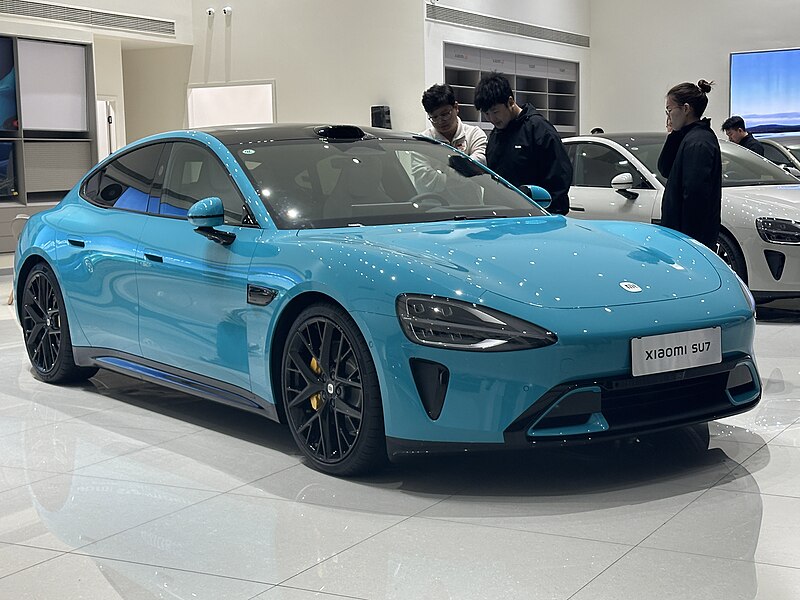
The popular mobile phone company Xiaomi has surprised many by revealing they will start selling their first Electric Vehicle (EV), the Xiaomi SU7. This move marks a big change for Xiaomi, known mostly for its smartphones, but now stepping into the world of eco-friendly transportation. With the EV market growing and more people thinking about the environment, Xiaomi's decision is turning heads.
But what's their EV all about, and will it really work?
Xiaomi's not stepping into the EV scene without a plan. They are bringing their tech smarts to the table, aiming to shake things up with their new EV. It has been reported to have self-driving features, using smart AI tech to keep drivers safe and happy. Xiaomi has described the SU7 as a “full-size high-performance eco-technology sedan”. Xiaomi has plans to redefine the technology stack of the automotive industry by integrating industrial manufacturing, smart software, and AI. Xiaomi's EV will completely redefine the automotive industry, which marks a huge step towards adopting more technology.
The Xiaomi electric car has advanced features designed to elevate the driving experience. The interior of the Xiaomi has a spacious cabin outfitted with cutting-edge technology, including a large touchscreen interface for entertainment and navigation purposes. Additionally, the car has autonomous driving capabilities, using AI technology to enhance safety and convenience on the road. Its state-of-the-art battery system ensures impressive range and performance, making it a compelling choice for those seeking both efficiency and innovation in their electric vehicle.
One big question is how much Xiaomi's EV will cost. With more people thinking about the planet and their wallets, Xiaomi needs to keep their EV affordable. We don't know the prices yet, but if Xiaomi can make a good car that doesn't break the bank, they might just win over a lot of new fans.
Xiaomi's move into the EV world is a big deal, both for them and for drivers everywhere. With their focus on tech, innovation, and value, Xiaomi could shake up the EV market. But they have some hurdles to clear, like proving they can make a top-notch car and handling the tough competition. Only time will tell if Xiaomi's first electric vehicle will be a hit or a miss.

Creative Commons CC0 1.0 Universal Public Domain Dedication
Sources:
https://www.bbc.co.uk/news/business-68541164
https://www.theregister.com/2024/03/13/xiaomi_ev_ready/
https://www.mi.com/global/discover/article?id=3095
The 2024 Business Vans Awards: Celebrating the Best in the Industry

After much anticipation, the results for the 2024 Business Vans Awards are finally in, with judges revealing this year's top performers. With a record number of entries, including some promising newcomers, the competition was fierce. Let's take a closer look at who came out on top in each category:
Best Small Van:
Winner: Renault Kangoo
Highly Commended: Toyota Proace City
Renault Kangoo takes the crown in the small van category, praised for its efficiency and versatility. Toyota Proace City earns recognition for its notable features and performance.

(Renault Kangoo) - https://creativecommons.org/licenses/by-sa/4.0/ (Toyota Proace City)- https://creativecommons.org/licenses/by-sa/4.0/
Best Small E-Van:
Winner: Citroen e-Berlingo
Highly Commended: Vauxhall Combo Electric
Citroen e-Berlingo leads the pack in electric vans, showcasing innovation and eco-friendliness. Vauxhall Combo Electric also receives commendation for its contribution to electric mobility.
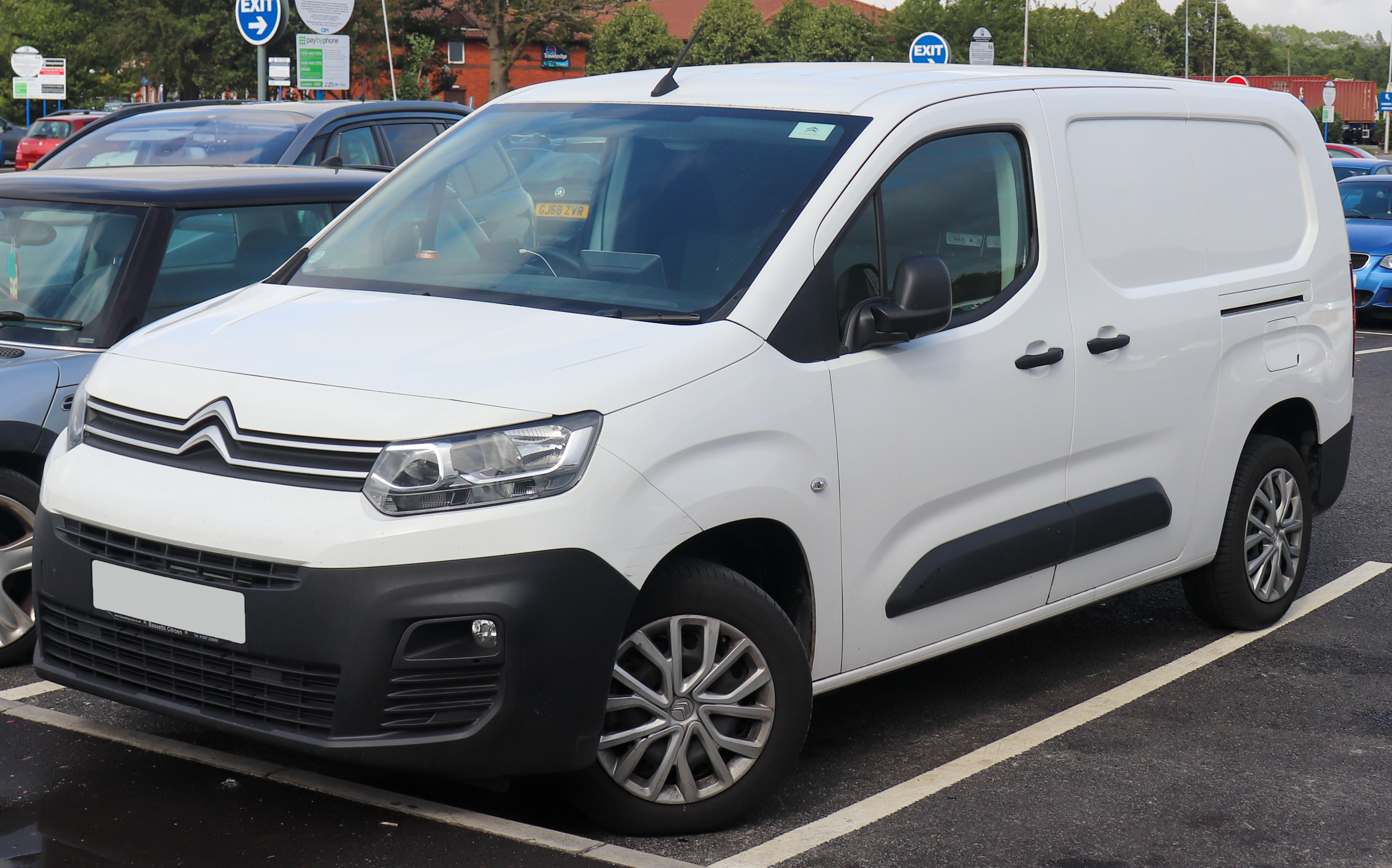

(Citroen e-Berlingo) - https://creativecommons.org/licenses/by-sa/4.0/ (Vauxhall Combo Electric) - https://creativecommons.org/publicdomain/zero/1.0/
Best Medium Van and Best Medium E-Van:
Winner: Vauxhall Vivaro
Vauxhall Vivaro proves its worth by winning awards in both the medium van and medium e-van categories, demonstrating reliability and adaptability.

https://creativecommons.org/licenses/by-sa/4.0/
Best Large Van / E-Van:
Winner: Iveco eDaily
Iveco eDaily secures the top spot in the large van and e-van segment, offering durability and performance for demanding commercial operations.

https://creativecommons.org/licenses/by-sa/4.0/
Best Manufacturer Van Service:
Winner: Harris MAXUS
Harris MAXUS earns recognition for its exceptional manufacturer van service, setting a high standard for customer satisfaction and support.
Best Pick-Up:
Winner: Ford Ranger
Highly Commended: Toyota Hilux
Ford Ranger stands out as the best pick-up, combining ruggedness with refinement. Toyota Hilux also receives praise for its enduring legacy and robust performance.
https://creativecommons.org/licenses/by-sa/4.0/
Best Long-Term Van Rental:
Winner: Northgate Vehicle Hire
Northgate Vehicle Hire emerges as the preferred choice for long-term van rental, known for reliability and flexibility in meeting diverse rental needs.
Best Manufacturer Conversion Programme:
Winner: Vanliners
Vanliners leads with its outstanding manufacturer conversion programme, offering tailored solutions to enhance van utility and functionality.
Best Short-Term Rental:
Winner: Europcar Vans and Trucks
Europcar Vans and Trucks clinch the title of the best short-term rental provider, offering convenience and quality service for short-duration van hires.
Best Used Van Programme:
Winner: Van Monster
Van Monster shines in the used van market, offering reassurance and quality assurance for pre-owned vans.
Best Van Electric Charging Point Provider:
Winner: Paua Tech Ltd
Paua Tech Ltd leads the way in electric charging infrastructure, supporting the transition towards sustainable electric mobility.
Best Van Fleet Management:
Winner: LightfootLightfoot emerges as the leader in van fleet management, leveraging technology to optimize fleet performance and efficiency.
Best Van Leasing Company:
Winner: ALD / LeasePlan
ALD / LeasePlan secures the title of the best van leasing company, offering comprehensive leasing solutions tailored to individual business needs.
Best Van Recovery:
Winner: Start Rescue
Start Rescue showcases excellence in van recovery services, providing reliable assistance during unexpected breakdowns or emergencies.
The 2024 Business Vans Awards celebrate excellence and innovation in the van industry, highlighting the crucial role vans play in driving commerce and industry forward. Congratulations to all the winners and nominees for their outstanding contributions!
The National Highways' Push Against Middle Lane Hogging
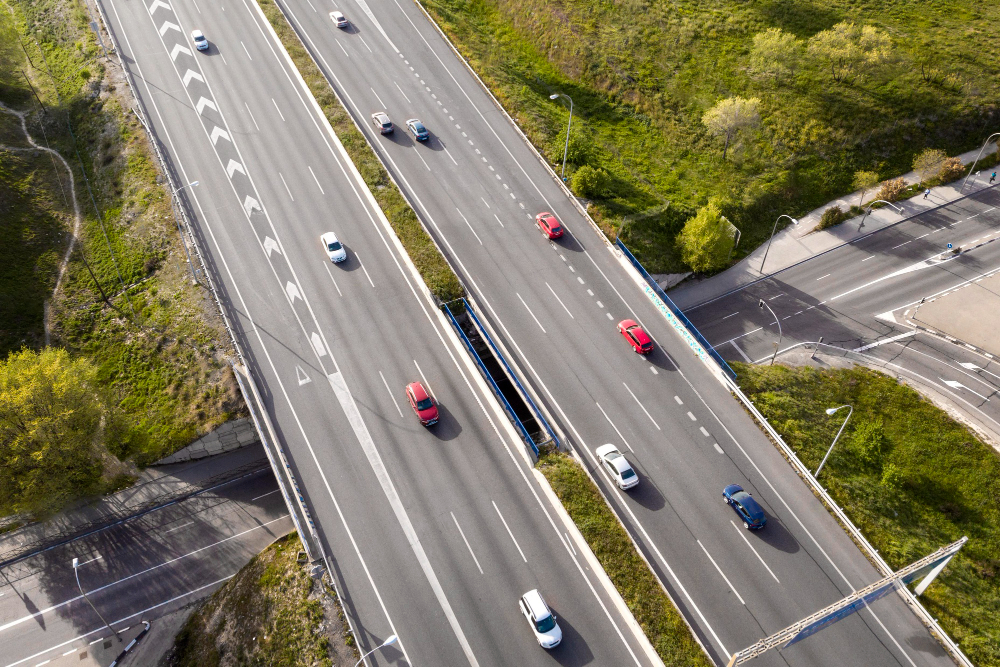
Motorway middle lane hogging has long been a frustration for drivers, causing congestion and increasing the risk of accidents. However, recent changes in regulations aim to address this issue, promoting safer and more efficient driving practices on highways. In this article, we'll explore what middle lane hogging is, why it's a problem, and how the new rules are set to tackle this behaviour.
Understanding Middle Lane Hogging
Middle lane hogging refers to the practice of driving in the middle lane of a multi-lane motorway for an extended period, without any valid reason such as overtaking slower vehicles. This will typically lead to unnecessary congestion, this is because vehicles that want to overtake have to manoeuvre around the hogging vehicle, often causing abrupt lane changes and increasing the risk of accidents.
The Problematic Impact
Middle lane hogging disrupts the flow of traffic and reduces the overall capacity of the road. It forces faster-moving vehicles to undertake, a manoeuvre associated with increased collision risks. Moreover, it breeds frustration among drivers and contributes to road rage incidents.
Previous Regulations
Before the recent changes, middle-lane hogging was technically not illegal in many jurisdictions. While highway codes generally emphasised keeping to the left lane when not overtaking, enforcement was often lax, and penalties were rare.
The New Rules
National Highways has launched a campaign aimed at motorists who sit in the middle lane on motorways. The campaign, titled 'Little changes, little everything', responds to a survey conducted by England's roads authority involving 2500 people aged between 16 and 75. Shockingly, 32% of drivers admitted to lane hogging "occasionally", with 5% admitting to doing it "always". In addition, more than a fifth of motorists admit to tailgating other drivers, contributing to an eighth of motorway collisions. National Highways' director of road safety, Sheena Hague, emphasizes the importance of breaking these bad habits, as they not only frustrate other drivers but also pose serious safety risks. Hague states, “Bad habits can make driving on our motorways a challenging experience... Our campaign aims to motivate motorists to embrace little changes, which will have an overall positive effect on both them and their fellow road users, reduce congestion, and keep traffic flowing."
The campaign also sheds light on the impact of poor lane discipline and tailgating. According to National Highways, 34% of respondents reported frustration due to poor lane discipline, while a staggering 67% highlighted tailgating as a serious problem on UK roads. Both lane-hogging and tailgating carry a fine of £100 and three penalty points on the offender's license. The Department for Transport's findings from 2022 reveal the grim consequences, with 198 people killed and 6730 seriously injured in crashes where tailgating was a factor. Overall in 2023, 1633 people lost their lives in accidents on UK roads, with 133,443 casualties reported, emphasizing the urgent need for safer driving practices. National Highways' campaign serves as a crucial reminder of the importance of responsible driving behaviour, not only for individual safety but for the well-being of all road users. By making small changes, motorists can contribute to a safer and more efficient road network, ultimately saving lives.
Benefits of Compliance
Complying with the new regulations offers several benefits for both drivers and society. It reduces congestion, improves traffic flow, and enhances overall road safety. Additionally, by adhering to lane discipline, maintaining safe following distances, and avoiding tailgating, motorists contribute to a smoother, safer, and more enjoyable driving experience for all road users, ultimately saving lives and minimising traffic-related incidents.
Tips for Responsible Driving:
- Always keep to the left lane when not overtaking.
- Use the middle lane only when overtaking slower vehicles or when preparing to exit the highway.
- Avoid unnecessary lane changes and stay alert to the traffic around you.
- Be courteous to other drivers and allow them to merge or overtake safely.
Conclusion
Middle lane hogging poses a significant challenge to road safety and efficiency, but with the implementation of new regulations and concerted efforts to promote responsible driving, there is hope for improvement. By adhering to the rules, staying vigilant, and showing consideration for fellow road users, we can all contribute to a smoother, safer, and more enjoyable driving experience on our motorways.

Desiged by www.freepik.com
Source: https://nationalhighways.co.uk/road-safety/little-changes/#
The new vans of 2024

This year there will be many new vehicles introduced in the UK market, these will include small, medium, and large vans. Here are the top 5 vans which are being released this year.
- Ford E- Transit Custom Van
First up, is the Ford E-Transit Custom van leading the charge towards electric vehicles. With a range of up to 236 miles on a single charge. You can also choose from two power outputs 100kW or 160kW and enjoy fast charging capabilities which will allow users to go from 15-80% in just 41 minutes. With a payload capacity of 1,100kg and load volume ranging from 5-8-9.0m3. This car will be expected in Spring 2024 with Prices starting from £39,500.
- Renault Master Van
The second vehicle is a Renault Master Van, this van will be available in various wheelbase lengths with both diesel and electric versions, offering versatility for business users. This van has a user-friendly infotainment system and a stylish interior. Available for ordering from April, prices are yet to be released for this vehicle.
- Volkswagen Transporter Van
The new Volkswagen van will be featuring a new Transporter van. Volkswagen will be teaming up with Ford so this van will feature technology from Ford but with its own Volkswagen design. This vehicle has a payload capacity of around 1,100kg and a towing capability of approximately 2,000kg. This van also has features such as a flat cabin floor, for added convenience. The release date and starting price for this van have not been released yet.
(Official images to be released in September)
- Ford All-Electric E-Transit Courier van
Expanding Ford’s Electric van family, the All-Electric E-transit Courier is set to make waves. The E-transit has the option for a fully electric powertrain or an efficient diesel/petrol engine making it a very versatile choice. This vehicle has some cool features such as a wider load area for more space, 100kg more payload compared to the current transit van, and a 12-inch SYNC 4 infotainment system. This van is set to hit the road in late 2024, with a starting price of £16,200 exc VAT.
- Citroen Relay Van
Last, but not least, there is the Citroen Relay Van with multiple powertrain options. This relay gives you the option to choose from diesel to fully electric options. This van features a payload capacity of 2,000kg (1,500 for the e-Relay), with an optional 7-inch all-digital instrument cluster, and 360-degree parking radar for added safety and convenience. There is electric monitoring This van is set to be released in 2024 and prices will be released later in the year.
Will the Tesla Cybertruck make it on UK Roads?
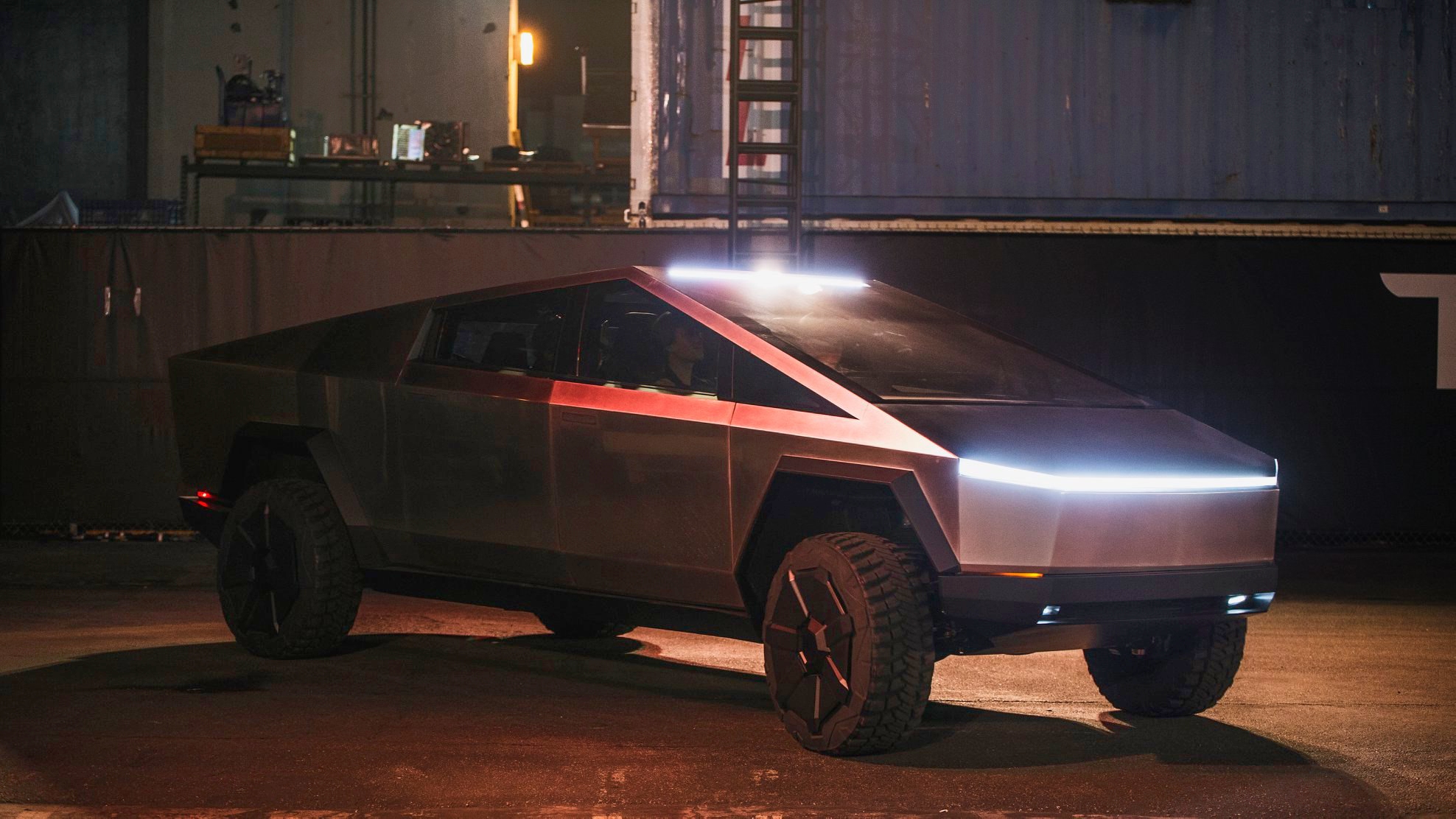
In the world of cars, one vehicle has been making a lot of noise – The Tesla Cybertruck. This is not your typical truck it is something out of a Marvel or sci-fi film. In 2019, Tesla’s CEO Elon Musk promised to redefine the conventional notion of a pickup truck. This truck has been made with an angular design, bulletproof frame, and advanced electric capabilities. The Cybertruck can accelerate from 0 to 0 mph in under 2.9 seconds and tow up to 14,000 pounds, with an estimated range of 340 miles. When using a Tesla Supercharger, the truck is said to add between 128 and 136 miles of range in 15 minutes. The Cybertruck represents a bold leap forward in automotive engineering, but the burning question remains, will the Cybertruck ever make it onto the streets of the UK?
Recent reports suggest that Tesla is considering bringing the cyber truck onto the UK market with plans for production of this vehicle underway.
What needs to change to make it onto UK Roads?
While the prospect of driving a Tesla Cybertruck on UK roads is undeniably enticing, several challenges must be addressed to ensure its compatibility with local regulations and infrastructure. One major consideration is the vehicle's size and weight, which may necessitate modifications to meet UK safety standards and road regulations. Additionally, the availability of charging infrastructure across the UK will play a crucial role in supporting the widespread adoption of electric vehicles like the Cybertruck.
Furthermore, Tesla may need to adapt the Cybertruck's design to accommodate UK road conditions, such as narrower lanes and tighter parking spaces. This could involve adjustments to the vehicle's dimensions and features to ensure optimal manoeuvrability and usability in urban environments.
However, despite the excitement surrounding the Cybertruck's potential arrival in the UK, there are also concerns that it may not be a perfect fit for British roads. Issues such as its large size, unconventional design, and the need for significant infrastructure upgrades could pose challenges that delay or complicate its introduction to the UK market. As such, while the Cybertruck represents a thrilling glimpse into the future of automotive technology, its journey to UK roads may not be without its obstacles.
Price of the Truck?
As for the price of the Cybertruck, the details of this remains elusive. However, industry experts speculate that the cost of importing and adapting the truck for UK roads which could affect its affordability. The prices in the US go from $39,000 for the base model to $69,000 for the top-tier model, the UK would need to budget for additional expenses such as taxes and import duties. Tesla’s track record of offering competitive pricing for its other electric vehicles may mean that the Cybertruck will be accessible to a wide range of consumers.
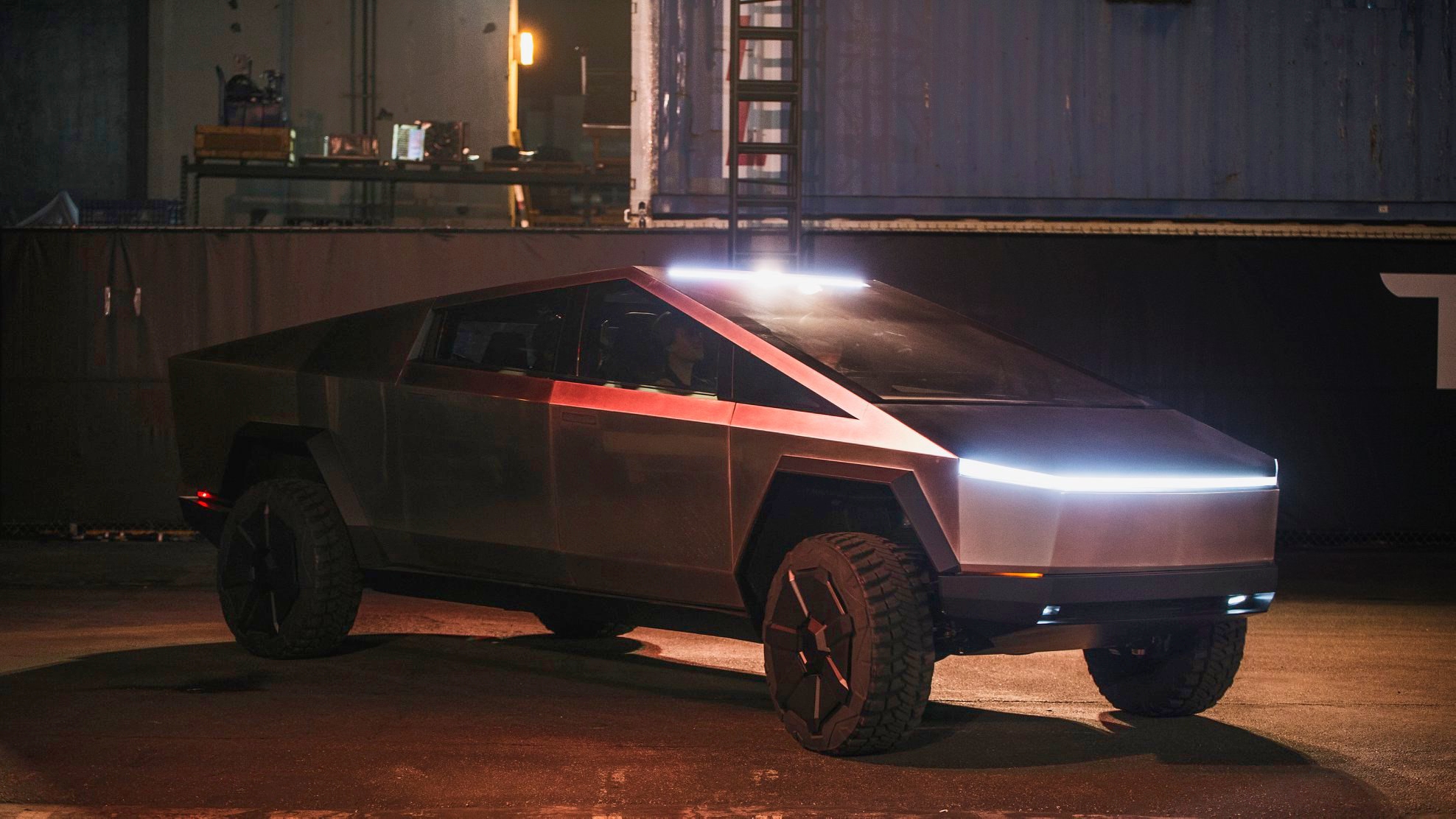
https://creativecommons.org/licenses/by-sa/4.0/
Sources:
https://www.gbnews.com/lifestyle/cars/new-tesla-cybertruck-uk-roads-electric-car-range
https://www.motoringresearch.com/car-news/tesla-cybertruck-production-europe-news/
Last Lap: Cars Discontinued in 2024

The automotive industry is ever-changing, with manufacturers introducing new models and bidding farewell to older ones. Let's delve into some recently discontinued vehicles and understand why they're no longer in production:
Audi R8 - Production of the Audi R8 is coming to an end after 16 years due to the rise of the 2023 GT RWD Model.

https://creativecommons.org/licenses/by-sa/2.0/
Dodge Charger and Challenger - US motoring giant Dodge is discontinuing both the Charger and the Challenger to focus on its first EV, the Daytona SRT.

https://creativecommons.org/publicdomain/zero/1.0/deed.en https://creativecommons.org/licenses/by-sa/4.0/
Chevrolet Camaro Turbo, Chevrolet Bolt EV, and EUV - Chevrolet is discontinuing its gas-powered Camaro and two EVs, the Bolt EV and the EUV, to ramp up electrification efforts.


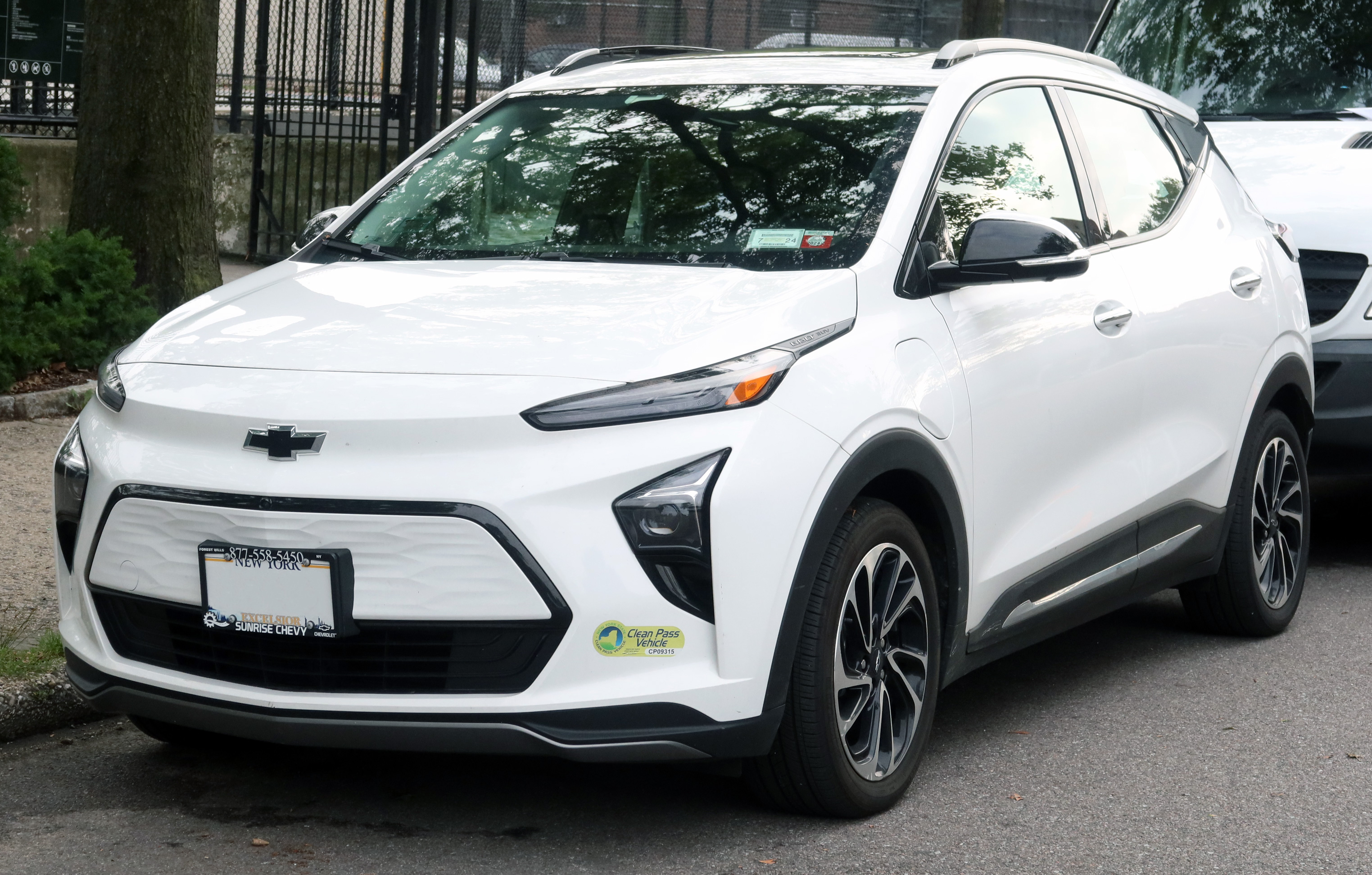
https://creativecommons.org/licenses/by-sa/2.0/ https://creativecommons.org/licenses/by-sa/2.0/ https://creativecommons.org/licenses/by-sa/4.0/
BMW Alpina B7 - The BMW Alpina B7 won't see a direct successor based on the current generation due to Alpina's deal with BMW ending in 2025.
https://creativecommons.org/licenses/by-sa/4.0/
Ferrari F8 Tributo and Portofino M - Ferrari is discontinuing the F8 Tributo and Portofino M, with the second of the two being replaced by the more powerful Roma Spider in 2024.

https://creativecommons.org/licenses/by-sa/4.0/ https://creativecommons.org/licenses/by-nc-sa/2.0/
Mercedes C-Class Cabriolet, C-Class Coupe, CLS, and E-Class Cabriolet - Mercedes-Benz is cutting back its lineup, discontinuing models like the C-Class Cabriolet, C-Class Coupe, CLS, and E-Class Cabriolet as part of its ongoing lineup simplification.


https://creativecommons.org/licenses/by-sa/4.0/ https://creativecommons.org/licenses/by-sa/3.0/ https://creativecommons.org/licenses/by-sa/4.0/
Ford Edge and Fiesta - Ford is discontinuing the Edge and Fiesta as part of its transition to EVs.
https://creativecommons.org/licenses/by-sa/4.0/ https://creativecommons.org/licenses/by-sa/4.0/
McLaren 720S - Production of the McLaren 720S has ended, with its successor, the 750S, sold out until late next year.
https://creativecommons.org/licenses/by-sa/4.0/
Chrysler 300 - 2024 will mark the end of the line for the Chrysler 300 after 18 years of production.

https://creativecommons.org/licenses/by/2.0/
Kia Stinger - Kia is discontinuing the Stinger in 2024 but introduced a Tribute Edition model as a sendoff.

https://creativecommons.org/licenses/by-sa/4.0/
Genesis G70 - Genesis is scrapping the G70 luxury sedan in favour of more SUVs and EVs.
https://creativecommons.org/licenses/by-sa/4.0/
Mazda MX-30 EV - Mazda is discontinuing the compact MX-30 EV due to its limited range and high price.
https://creativecommons.org/licenses/by-sa/4.0/
Nissan Maxima - Nissan is discontinuing the full-size Maxima before the end of 2023 with no plans for a new electric sedan.
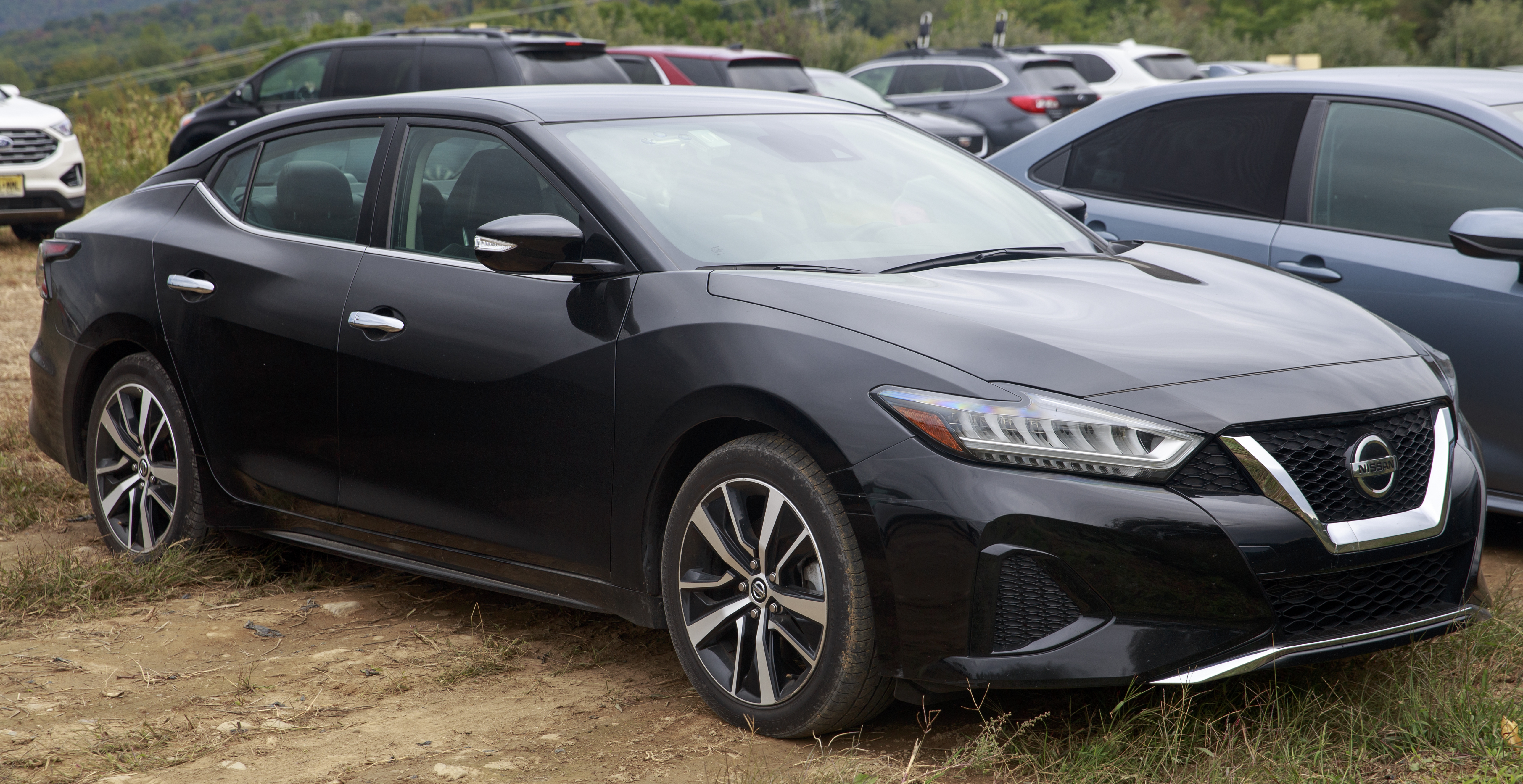
https://creativecommons.org/licenses/by-sa/3.0/
Honda e - Discontinued due to limited market demand for the model, production ended in 2022.

https://creativecommons.org/licenses/by-sa/3.0/de/
Navigating the Decision to Purchase a Discontinued Vehicle
For consumers considering purchasing a discontinued vehicle, thorough research is essential. Understanding the reasons behind the discontinuation can provide insights into the vehicle's long-term viability and resale value. Prospective buyers should also assess the availability of parts and maintenance support, as well as consider the impact of depreciation on the vehicle's resale value. By weighing these factors carefully, consumers can make informed decisions that align with their needs and preferences.
Sources:
https://uk.motor1.com/news/700566/honda-e-production-ending/
https://www.dubizzle.com/blog/cars/buying-discontinued-car/#h-hunt-for-car-parts
https://www.thesun.co.uk/motors/23935455/25-discontinued-cars-major-brands-2024/
The UK's Most Affordable Electric Car?

Unveiling the Dacia Spring
Electric Vehicles (EVs) are gaining popularity for being eco-friendly, but they can be quite expensive. This is where the Dacia Spring comes in, it is changing the game by offering an affordable option for those who would want to go electric.
Dacia is known for making cars which are known for making cars which are budget-friendly, and the Spring showcases this. It is priced lower than many other electric cars which makes it a great choice for those who want to drive electric and keep within budget.
What Makes it special?
The Dacia spring is a cheaper car, but it does not lack in its features. It can go up to 140 miles on a single charge, which is more than enough for an everyday drive. Charging this car can be done at home or a charging station. This vehicle has features such as compact with foldable back seats, a 10-inch touchscreen with maps and customisable apps and driving assistance features such as Lane Keeping assist, Traffic sign recognition and Emergency braking system.
The Dacia spring not only is not very expensive, as this car is fully electric it also means that it produces zero emissions which is better for the environment. Since it is affordable to run users would also save money on fuel.
The Dacia spring is the perfect example of not needing to spend a fortune to drive electric. As it is low-cost and has many practical features, and is eco-friendly, it is a smart choice for anyone looking to make the switch to electric driving.

https://creativecommons.org/licenses/by-sa/4.0/
Pickup Truck Tax Increase Cancelled

On Monday 12 February 2024, HM Revenue & Customs (HMRC) updated its rules on how it taxes Double Cab Pick Ups (DCPUs) because of a court decision from 2020. The old rules said that from 1 July 2024, DCPUs weighing one tonne or more would be treated like cars, not goods vehicles, for tax reasons.
But after hearing from farmers and people in the motoring industry about how this change might affect them, the government decided to rethink. They realized that the new rules might not be good for businesses, especially those in farming and motoring.
So, HMRC has decided to go back to the old rules. This means that DCPUs will still be treated as goods vehicles, not cars, for tax purposes. The government plans to make this official by changing the law in the next Finance Bill.
Nigel Huddleston, who works for the Treasury, said: “We will change the law in the next Finance Bill to avoid any tax problems that could hurt farmers, van drivers, and the UK’s economy.”
This means that employers won't have to pay more tax when they provide these vehicles to their employees, and businesses won't lose tax benefits when they buy these vehicles for work.
HMRC removed these rules on Monday 19 February 2024. This change only affects DCPUs weighing one tonne or more. DCPUs weighing less than one tonne will still be treated like cars for tax purposes
https://www.gov.uk/government/news/update-on-hmrc-double-cab-pick-up-guidance
________________________ UPDATE _________________________
What does the reclassification of Pickup Trucks mean for your business?
Vehicle taxation in the United Kingdom is set to undergo significant changes, particularly for trucks and pickups. As of the 1st of July 2024, a new classification system will be implemented, impacting how these vehicles are taxed. This shift comes as the UK government seeks to address inconsistencies in the taxation of vehicles, particularly those used for both business and personal purposes.
One of the key changes is the classification of pickups as company cars rather than commercial vehicles. This alteration, announced by the government, aims to close a loophole that allowed some taxpayers to benefit from lower tax rates by using pickups for personal use under the guise of commercial activity.
Pickups have often been treated as commercial vehicles due to their design and functionality. However, with the rise in popularity of double-cab pickups, which offer both seating for passengers and cargo space, the distinction between commercial and personal use became blurred.
The British Vehicle Rental and Leasing Association (BVRLA) has been at the forefront of discussions surrounding this issue. They have argued that double-cab pickups should be classified as cars rather than vans due to their increasing use for personal transportation and the amenities they offer, such as comfortable interiors and advanced features.
The reclassification of pickups as company cars will have significant implications for businesses and individuals alike. For businesses that provide pickups to employees for both work and personal use, there will likely be an increase in tax liability. Employees who use pickups for personal use may see changes in the taxation of their benefits in kind.
This change could also affect vehicle leasing and purchasing decisions. Companies that rely heavily on pickups for their operations may need to reassess their fleet management strategies to account for the potential increase in tax costs. Similarly, individuals who use pickups for both work and personal purposes may need to reconsider their vehicle choices in light of the new tax implications.
The government's decision to reclassify pickups as company cars reflects a broader effort to modernize and streamline the tax system. By addressing inconsistencies in vehicle taxation, the government aims to ensure fairness and transparency while generating revenue to support public services and infrastructure.
Navigating the new tax rules might be tough for businesses and individuals. It's crucial for everyone involved to stay updated on the latest updates and get advice from professionals to grasp how these changes will affect them.
In summary, the upcoming tax changes for trucks and pickups in the UK mark a big shift in how they're categorized and taxed. Those impacted should carefully consider what this means for them and adapt their plans to avoid any negative consequences.
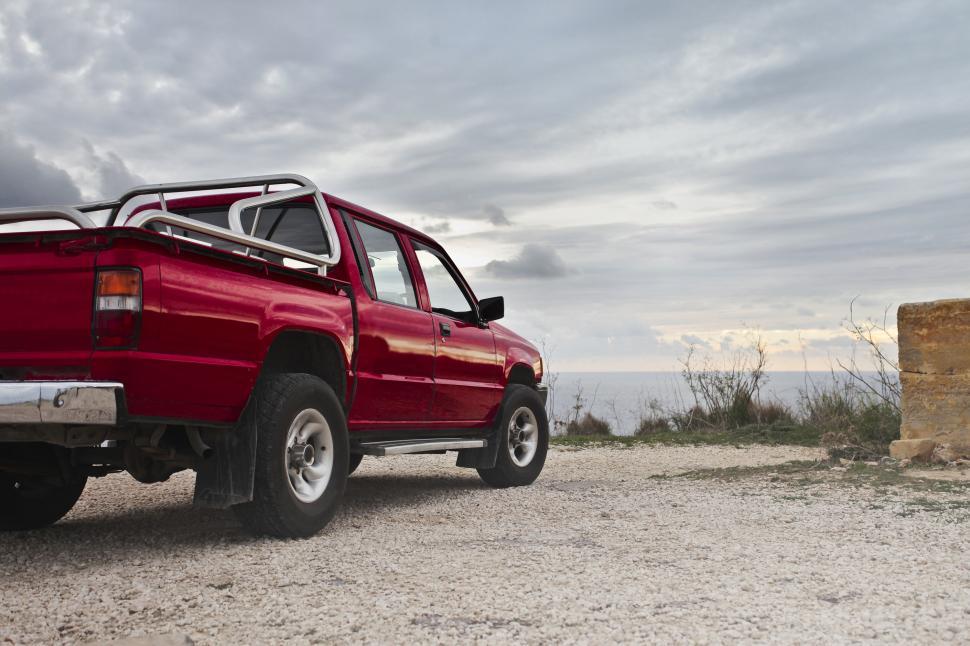
https://creativecommons.org/publicdomain/zero/1.0/
Sources: https://www.bvrla.co.uk/resource/are-double-cab-pickups-cars-or-vans.html
https://www.fleetnews.co.uk/news/pickups-to-be-classed-as-company-cars-from-july-1
Self-driving cars 2026: Changing how we get around the UK.

Big changes are coming to the way we get around to the United Kingdom, with the prospect of self-driving cars hitting the roads by 2026. Transport Secretary, Trudy Harrison MP, has unveiled plans that could revolutionize how people travel, bringing autonomous vehicles to UK streets within the next few years.
The introduction of self-driving cars represents a monumental shift in the automotive industry, promising to enhance road safety, reduce traffic congestion, and revolutionize urban mobility. With technology giants like Google and automotive manufacturers investing heavily in autonomous vehicle development, the vision of driverless cars becoming a reality is closer than ever before.
However, alongside the excitement surrounding this futuristic mode of transportation, there are also concerns about regulatory frameworks, cybersecurity, and societal acceptance. As the UK prepares for the arrival of self-driving cars, policymakers, industry stakeholders, and the public must collaborate to address these challenges and ensure a smooth transition to the era of autonomous driving. With careful planning and robust regulations in place, self-driving cars have the potential to redefine the way we move and usher in a new era of mobility in the UK.
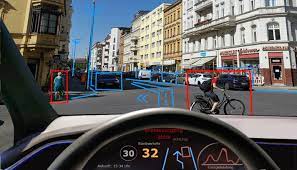
Sources: https://www.theguardian.com/technology/2023/dec/27/self-driving-cars-could-be-on-uk-roads-by-2026-says-transport-secretary
https://news.sky.com/story/self-driving-cars-could-be-on-british-roads-by-2026-says-transport-secretary-13038145
London Gatwick is the first International to open a dedicated Electric vehicle charging station
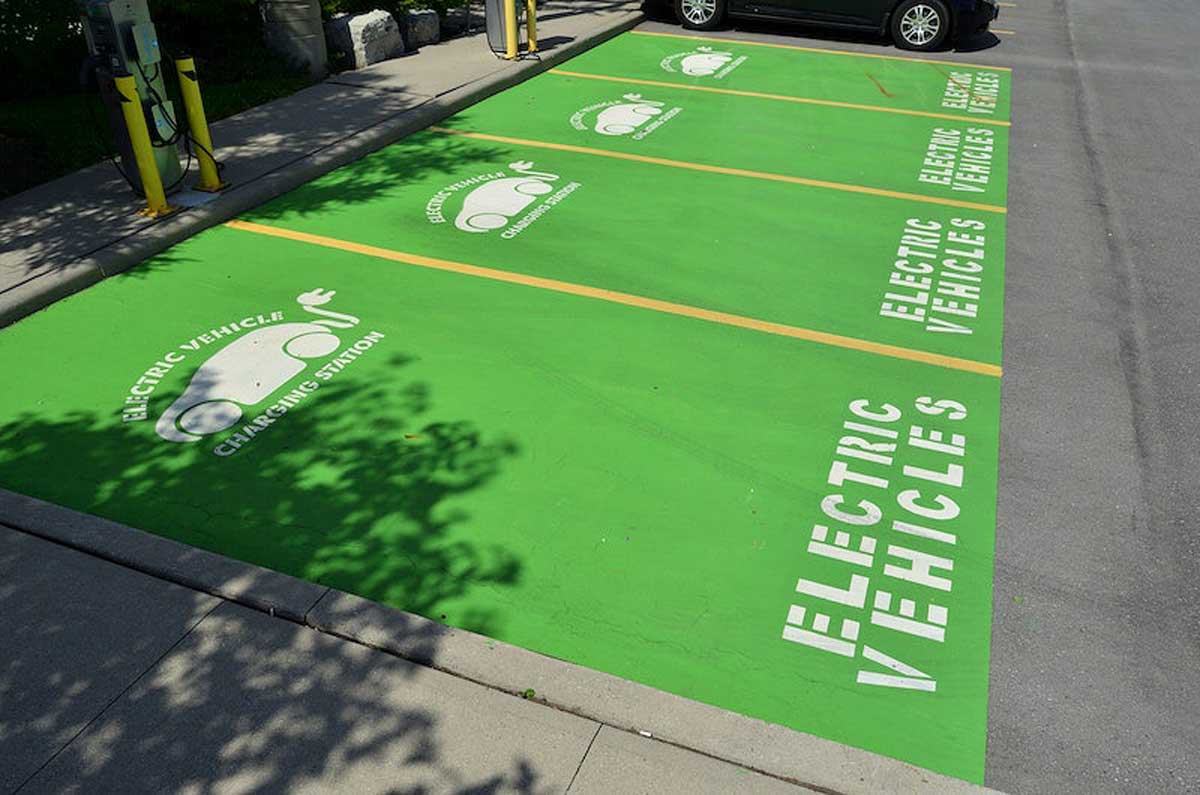
London Gatwick Airport has made history by opening the first electric vehicle charging station designed specifically for international airports, known as The Electric Forecourt®. This new station is a big step forward in promoting eco-friendly travel and sets an example for other airports around the world. It's a handy option for both passengers and airport staff who own electric cars.
The Electric Forecourt® is equipped with the latest technology, making it easy for electric car owners to charge up their vehicles quickly. Gatwick Airport is committed to reducing its carbon footprint, and this initiative shows its dedication to environmental protection. By accepting electric cars, Gatwick Airport is leading the way in making travel more sustainable.
This new charging station at Gatwick Airport is a great example of how innovation and environmental awareness can go hand in hand. As more people focus on protecting the planet, Gatwick's Electric Forecourt® shows that airports can play a part in promoting cleaner transportation.
Source: https://www.mediacentre.gatwickairport.com/news/london-gatwick-becomes-first-international-airport-to-open-dedicated-electric-vehicle-charging-station-electric-forecourt-r-c7ab-40f32.html
Electric Vehicle Tax Breaks: What to Know Before 2025
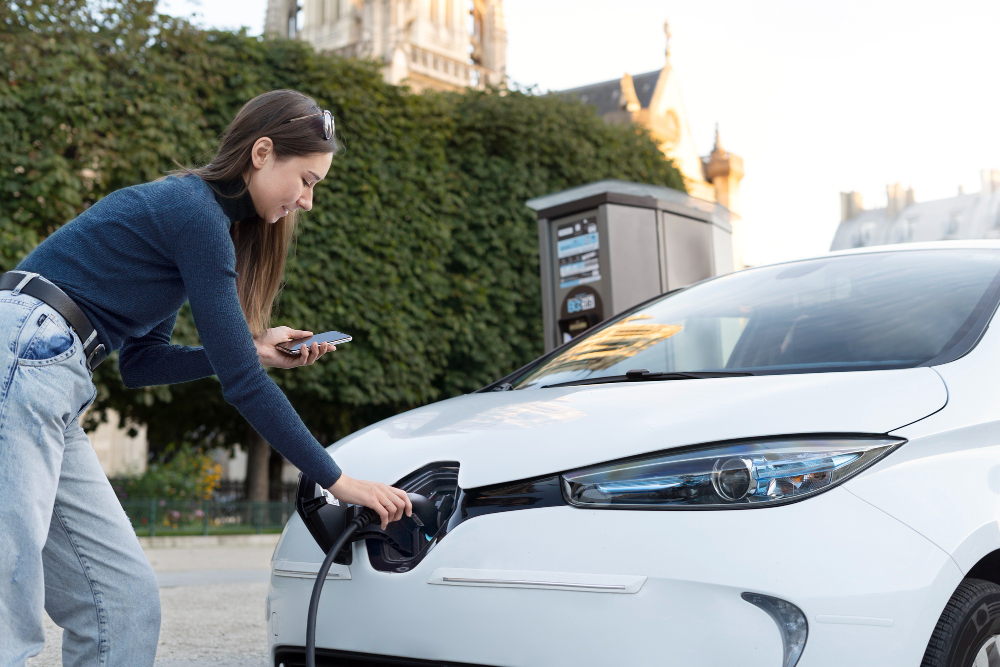
The UK is going full speed ahead with Electric Vehicles (EVs), and it's crucial to grasp how changes in road tax will affect current and future EV owners. These changes reflect the government's commitment to sustainability and the shifting car industry dynamics. Until April 1, 2025, EV owners enjoy exemptions from road tax and some congestion charges.
Buying an EV comes with a great perk: first-year allowances. Until March 31, 2025, businesses can claim a 100% allowance on EVs, deducting the full vehicle cost from taxable profits. The same applies to businesses setting up EV charging points. While cars miss out on annual investment allowances, most vans qualify, possibly for government grants too.
From April 1, 2025, newly registered zero-emission cars pay a modest £10 for the first year, then £180 annually. This applies to those registered between April 2017 and March 2025 too. However, electric cars lose their exemption from the Expensive Car Supplement in 2025, adding extra costs for those over £40,000. Low-emission cars registered between March 2001 and March 2017 move to a £20 yearly tax rate.
Zero-emission vans join the ranks of petrol and diesel vans, costing around £290 a year for most. Electric motorcycles and tricycles pay a nominal £22 annually. Although the government plans fairer tax rates for Alternative Fuel Vehicles and Hybrids, details are scarce.
EVs also enjoy low benefit-in-kind (BiK) rates, staying at 2% until April 2025, and then increasing by 1% yearly until 2028. This makes tax planning easier and cheaper compared to high-emission vehicles.
While EVs used to dodge Vehicle Excise Duty (VED), that changes from 2025 when they'll face the same rates as petrol and diesel cars. Despite increased tax costs for company EVs, they're still cheaper and greener than their fossil fuel counterparts. But considering the looming end of tax perks in 2025, buying an electric car sooner rather than later might be a smart move.
Sources: https://www.accountingweb.co.uk/community/industry-insights/tax-on-electric-vehicles
https://www.rac.co.uk/drive/electric-cars/running/electric-car-road-tax-guide-do-i-need-to-pay/#:~:text=From%201%20April%202025%2C%20electric,Excise%20Duty%20(VED).%E2%80%9D
New Safety Rules for HGVs in London 2024
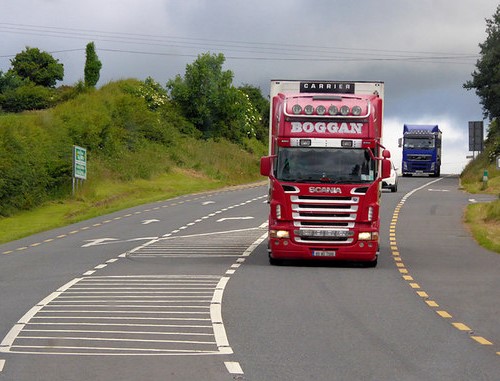
From the 28th of October 2024, Heavy Good Vehicles (HGVs) in London will be subjected to a range of new safety rules. The two main regulations that will be introduced will be the Direct Vision Standards (DVS) and the Progressive Safe System (PSS). Heavy Goods Vehicles in London over 12 tonnes will be required to have a minimum three-star DVS rating, should a vehicle not be able to follow this, the HGV must be fitted with a system of updated safety features which would be referred to as the Progressive Safe System (PSS).
The Direct Vision Standard Rating (DVS) refers to a measure of how much a driver can see directly from their Heavy Good Vehicle cab without using mirrors and cameras. The minimum DVS put in place ensures that HGVs meet specific visibility standards which would reduce blind spots and in turn provide drives with a clearer view. Putting this in place will be essential in helping minimize risks, especially in busy urban areas. The Progressive Safe System (PSS) encourages HGVs to adopt additional safety features such as sensors and cameras to improve overall safety.
From 2024, the PSS will make rules that were previously optional compulsory. These rules are:
- A nearside camera must be installed to eliminate blind spots.
- An Audio warning must be installed to let other road users know about any manoeuvres.
- Class V and VI mirrors, or an ECE R46-approved monitoring system (CMS), or a combination of both.
- Side sensors must be fitted so that there is full coverage down the nearside cab and trailer, these should not be triggered by roadside furniture or stationary vehicles.
- Moving off Information (MOI) systems must be fitted to prevent collisions in the front blind spot.
Transport for London (TFL) will be enforcing these changes from October 2028, however, there will be a three-month grace period to give operators time to comply with DVS and PSS. The London Committee Council has said that they will review whether an extension is needed to get all HGVs complying, this extension may go up to June 2024.
Sources:
https://anthonyjones.com/hgv-new-safety-rules-for-london-2024/#:~:text=New%20Rules%20For%20Minimum%20DVS,Progressive%20Safe%20System%20(PSS)
https://www.fleetnews.co.uk/news/concern-fleets-will-struggle-to-adapt-to-new-hgv-safety-standards
The Road Ahead: Electric Cars and Taxation in the UK
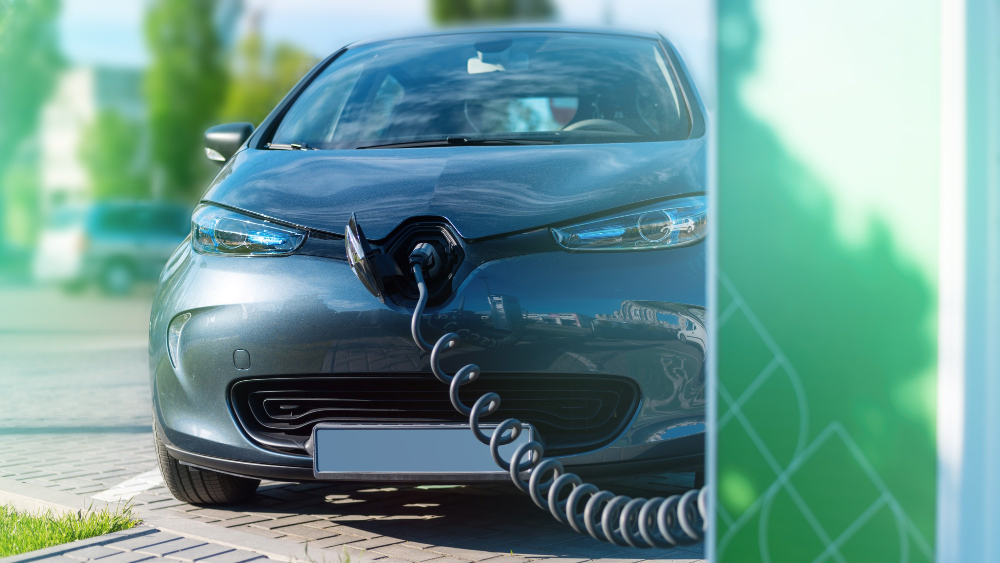
As businesses in the UK increasingly transition to electric vehicles (EVs), one of the most significant factors driving this shift is the stable Benefit-in-Kind (BIK) tax treatment. The government's commitment to maintaining favourable BIK rates for electric cars until at least 2025 provides certainty for businesses planning their fleet strategies. This stability in tax policy is crucial for businesses seeking to minimise financial risks and allow them to make long-term investments in sustainable transportation solutions.
The current BIK rates for electric cars are notably lower compared to those for traditional petrol or diesel vehicles. This incentivises both employers and employees to choose electric company cars, as the lower tax liabilities mean that there will be significant cost savings. However, beyond 2025, there may be concerns about the potential changes to BIK rates for electric cars. While the government has indicated its intention to maintain support for electric vehicles, future adjustments to tax policies could impact businesses using EVs.
Looking ahead, businesses must be watchful and stay informed about any updates or changes to BIK tax rates beyond 2025. It's crucial to keep pushing for fair and steady tax rules for electric cars so they stay popular in the UK. Businesses need to talk to the people who make the rules and keep an eye on any changes that might happen. This way, they can make the most of electric cars and handle any tax changes that might come up.

Designed by www.freepik.com
Sources: https://pod-point.com/guides/business/company-electric-car-tax
https://octopusev.com/ev-hub/how-does-benefit-in-kind-affect-electric-cars
The DVSA to change driver Eyesight Test

The Driver and Vehicle Standard Agency (DVSA) is set to implement changes to the eyesight test for UK drivers. As there have been reports of more than 17 million drivers having night vision issues, the DVSA has released its business strategy for 2023-2024 which includes reviews of the way that eye tests are conducted. The changes make the assessment stricter when testing the driver’s visual activity, the DVSA believes that this change will enhance road safety and ensure that drivers have optimal eyesight for safe driving.
In the current eyesight test, drivers need to be able to read a licence plate from 20 metres away to pass. Public consultation has found that the fact that one of the main issues with the way the current eyesight test is being conducted is the lack of varying light. The exact details of the new eyesight test are still pending, it is believed to be conducted with various light settings. The ability to see in the dark can be impacted by various eye diseases, older drivers are more likely to have a decline in their vision. Currently, drivers are required by law to notify the DVLA if they have any loss of vision or certain eye disorders, should a driver fail to do so it may result in a £1000 fine and a driving ban.
The DVSA has taken the lead in implementing changes, drivers should now be prepared for a more precise eyesight test. These changes reflect the agency’s commitment to prioritise road safety and align with broader initiatives at minimising accidents and improving driving standards.
https://creativecommons.org/licenses/by/2.0/
Source: https://www.driving.org/new-eyesight-test-changes-loom-as-dvsa-tightens-uk-driving-regulations/
-
Experience the Future: The New All-Electric Ford Explorer Unveiled
 Revolutionary Features The New All-Electric Ford Explorer WLTP Range is packed ...Read MoreIntelligent Speed Assistance Becomes Mandatory in New European Cars
Revolutionary Features The New All-Electric Ford Explorer WLTP Range is packed ...Read MoreIntelligent Speed Assistance Becomes Mandatory in New European Cars Intelligent Speed Assistance Becomes Mandatory in New European Cars Starting ne...Read MoreComparing Costs: Are Electric Vehicles Catching Up to Petrol Cars?
Intelligent Speed Assistance Becomes Mandatory in New European Cars Starting ne...Read MoreComparing Costs: Are Electric Vehicles Catching Up to Petrol Cars? Many experts predict that by 2026, Electric Vehicles (EVs) will cost the same up...Read MoreHybrid Vehicles: Exploring Types and Varieties
Many experts predict that by 2026, Electric Vehicles (EVs) will cost the same up...Read MoreHybrid Vehicles: Exploring Types and Varieties Hybrid Vehicles: Exploring Types and Varieties There has been a rise in electri...Read MoreAll About the Diesel Particulate Filters
Hybrid Vehicles: Exploring Types and Varieties There has been a rise in electri...Read MoreAll About the Diesel Particulate Filters Diesel particulate filters are necessary to reduce the amount of harmful particl...Read MoreThe 2024 Business Vans Awards: Celebrating the Best in the Industry
Diesel particulate filters are necessary to reduce the amount of harmful particl...Read MoreThe 2024 Business Vans Awards: Celebrating the Best in the Industry After much anticipation, the results for the 2024 Business Vans Awards are final...Read More
After much anticipation, the results for the 2024 Business Vans Awards are final...Read More





